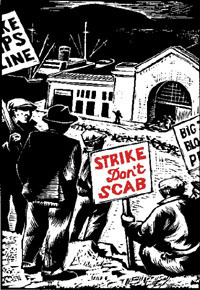|
|
|
|
|
|
Long-Haul Sweatshops
Long-Haul Sweatshops
http://www.nytimes.com/2016/03/09/opinion/long-haul-sweatshops.html?ref=...
By ANNE BALAY and MONA SHATTELLMARCH 9, 2016 155 COMMENTS
Photo
CreditSophia Foster-Dimino
IT might seem like a good time to be a long-haul trucker: More than ever, the American economy relies on hundreds of thousands of 18-wheelers to move goods across the country. But the industry is in crisis, with drivers leaving in droves because of low pay and poor working conditions.
A big part of the problem is that when it comes to long-haul trucking, the government’s focus has been almost entirely on road safety. That’s not a misplaced concern; highway accidents involving semis kill about 5,000 people per year. But it overlooks a critical concern: the well-being of the drivers themselves.
We have inside knowledge of the trucking industry and the kinds of working conditions that truckers endure every day. One of us — Professor Balay — is a former long-haul trucker who does ethnographic research on blue-collar workers. The other, Professor Shattell, is a researcher and registered nurse who has studied the mental, physical and sexual health of truckers.
We know better than most why the allure of long-haul trucking is so strong: Behind the wheel of a semi, drivers feel connected to — almost one with — all that power. The job involves a high degree of skill and focus; floating the gears takes coordination and timing, maneuvering that bulk takes visual perceptiveness and courage, and surviving against the odds of weather, mountains, construction zones, cultural scorn and boredom takes a certain kind of toughness. Truckers take pride in their work, especially given that there are precious few other meaningful blue-collar jobs out there these days.
And yet when it comes to the operation of those big machines, the federal government seems to have forgotten that there are actual people behind the wheel. Drivers are largely regulated by the Department of Transportation, through the Federal Motor Carrier Safety Administration, not the Department of Labor. That allows the government to address highway safety through things like maximum driving hours, mandatory rest times and annual physicals.
Such steps are meant to keep our roads safe, and they indirectly help drivers. But it also leaves them exposed to inhumane and demeaning work conditions, including abusive amounts of surveillance and micromanaging. Truckers are told what route to take, where to buy gas and for how much, when and where to sleep. They work 14-hour days routinely and continuously, often without weekends, sick pay or holiday pay. They drive 11 of those hours, and perform other work for the remaining three: loading, vehicle maintenance and a lot of waiting.
This mistreatment doesn’t just harm the drivers. By forcing experienced workers to leave the industry, it leads employers to hire younger and less capable drivers. Under pressure from the industry, last month the Senate approved a pilot program that will allow 18-year-olds to drive semis across state lines, even though the 18- to 21-year-old demographic has one of the highest accident rates.
It also undermines truck-safety rules themselves: As long as drivers aren’t behind the wheel, the Department of Transportation lets employers do what they want with their drivers — which usually means they get back on the road unrested and irritated, hardly the person you want driving an 18-wheeler.
None of this is a secret; drivers have been raising concerns for years. But rather than improving working conditions and increasing requirements for rest, or regulating the companies themselves, legislators typically respond to truck-accident rates by amping up surveillance of truck drivers. Often speed is “governed,” with the truck unable to go over a specific speed; in other cases a sensor measures the distance from the front of the truck to the vehicle ahead, automatically braking if the space is deemed insufficient. Some companies even have two-way cameras trained on truck drivers 24/7. (Meanwhile, a new rule limiting a trucker’s workweek to 70 hours, down from 82, has been suspended since 2014.)
It’s not that Congress hasn’t tried; it’s that the few labor laws that do exist have been passed piecemeal, so they do more harm than good.
Take a recent rule requiring that truckers with sleep apnea use a continuous positive airway pressure machine when they’re asleep in their trucks. The machines are supposed to help truckers sleep better, which is great. But they also need power to run, more power than a truck battery can provide, so truckers have to run their engines. But many states forbid drivers to idle their trucks. So truckers often can’t win — they must break one of these laws. No wonder they leave.
The solution isn’t easy, but it is straightforward. Congress needs to give the Department of Labor the power to regulate truck drivers’ working conditions, and mandate that it coordinate its policies with the Department of Transportation. The upshot should be to extend the variety of workplace protections available to almost all American workers to the millions of men and women driving the nation’s commercial trucking fleet.
After all, the best way to protect the people driving alongside America’s long-haul trucks is to protect the people behind the wheel of those trucks, too.
Anne Balay, a visiting assistant professor at Haverford College, is the author of “Steel Closets: Voices of Gay, Lesbian, and Transgender Steelworkers” and a former long-haul trucker. Mona Shattell is a professor of nursing at Rush University.
-

- Log in to post comments
- Printer-friendly version



